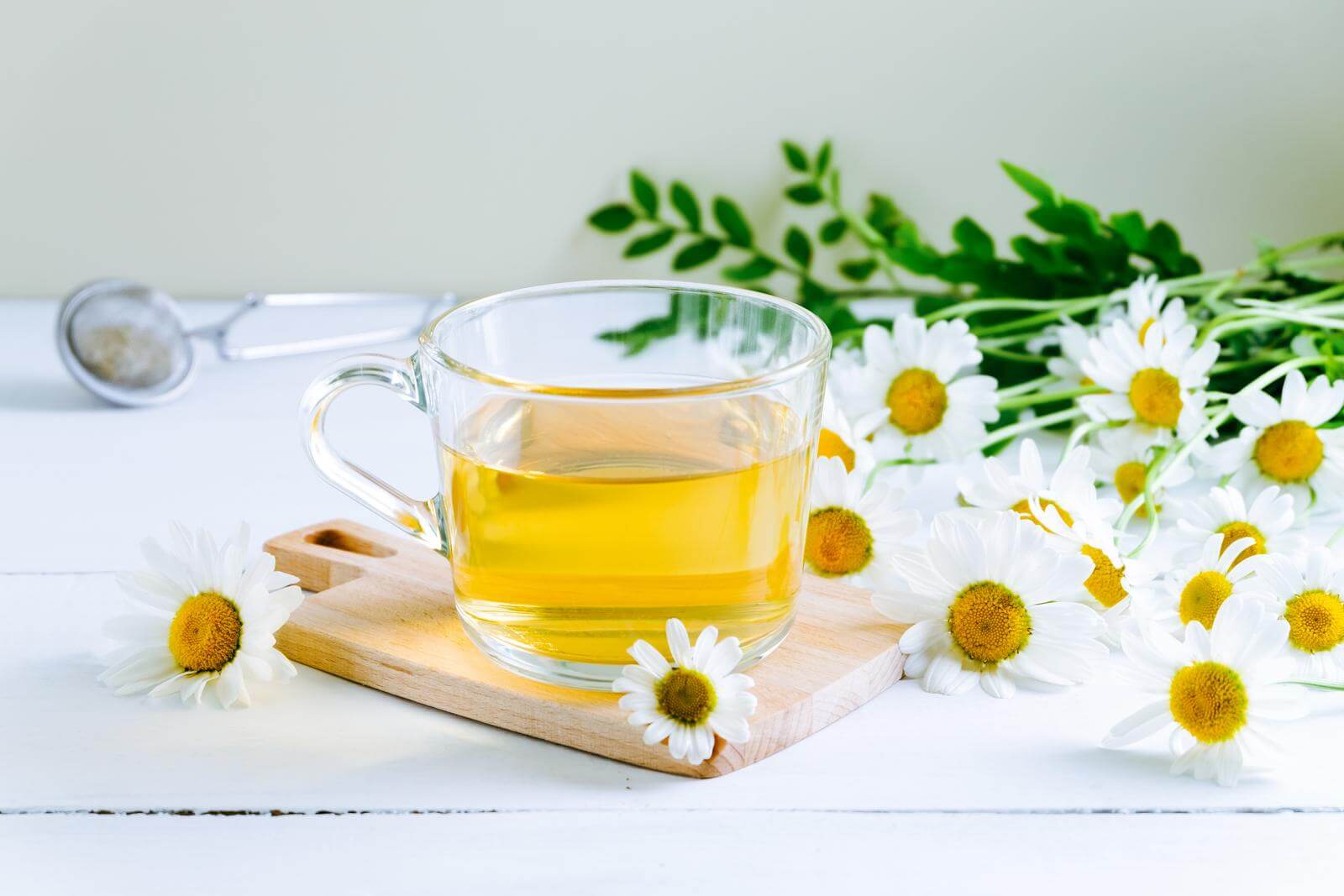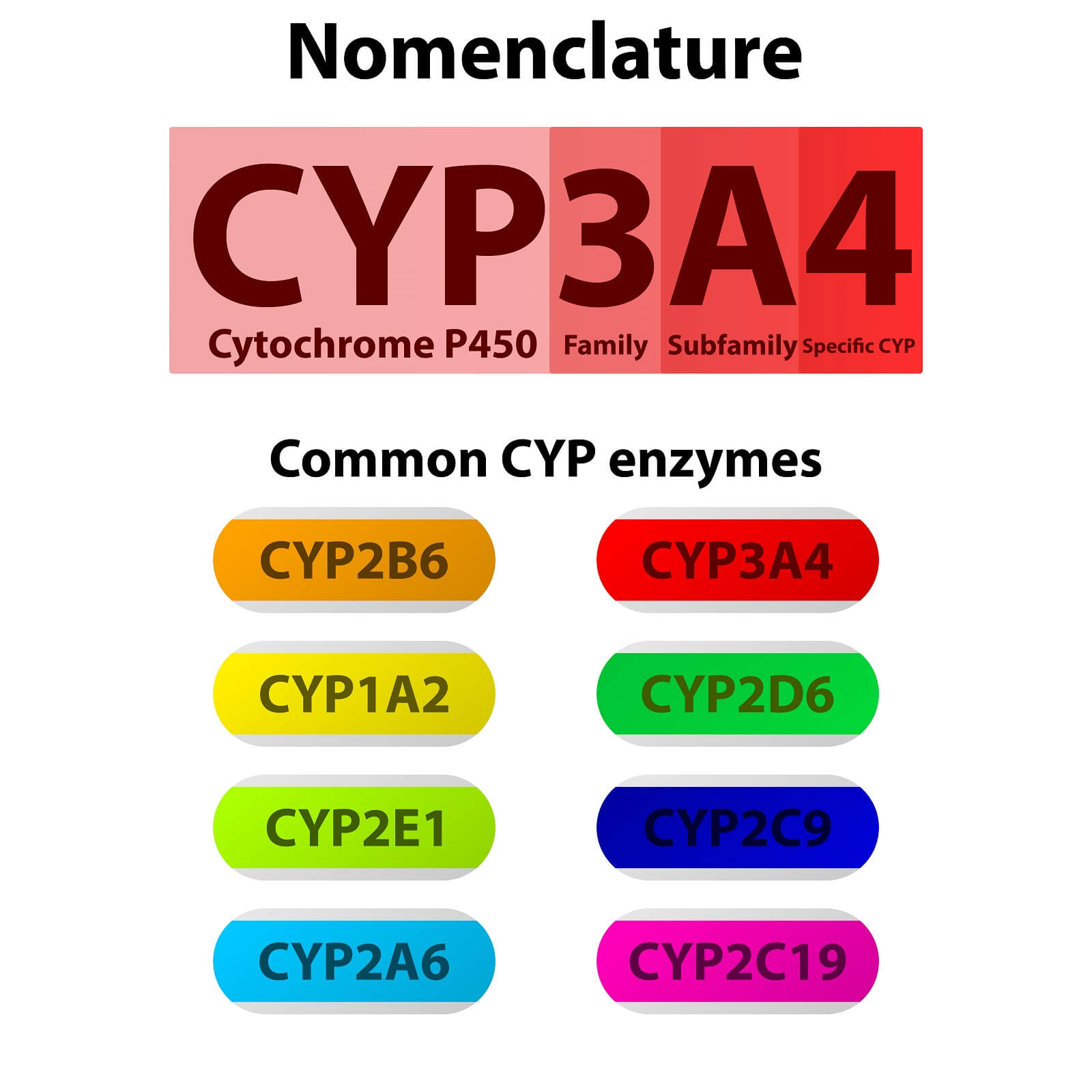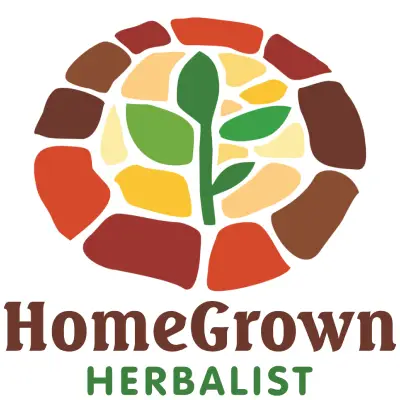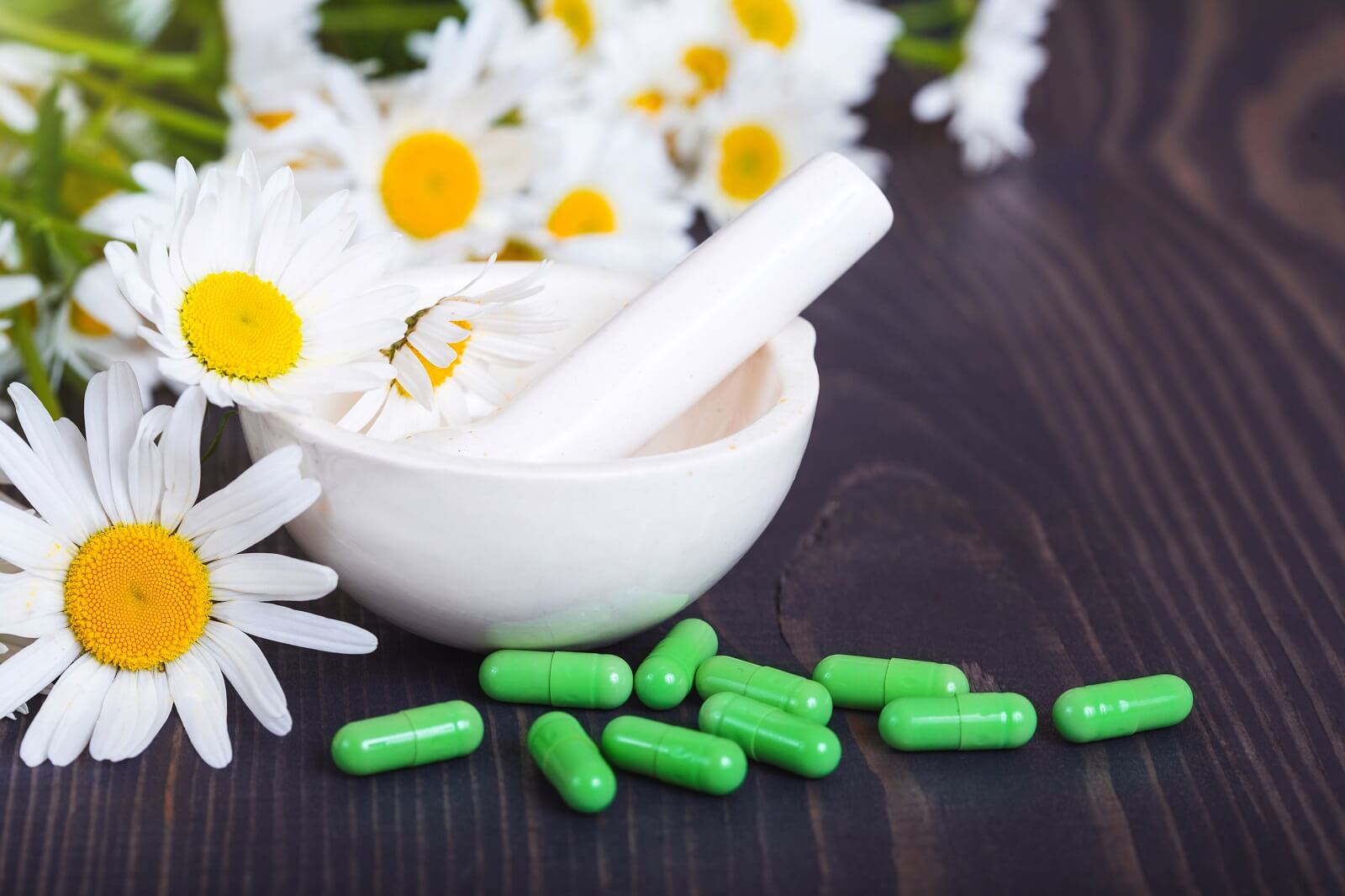
Chamomile (Matricaria chamomilla / Chamaemelum nobile) is generally a very safe herb with few, if any, side effects. But, there are some cautions to be aware of. Possibly the most important precaution is for pregnant women; as this herb may cause uterine contractions, pre-term birth, and potentially increase the risk of miscarriage (more on this later).
The other important thing to be aware of is that chamomile interacts with an enzyme responsible for metabolizing many drugs known as cytochrome P450. As a result, it may have significant interactions with certain drugs like the blood thinner warfarin. Your doctor will know more about which drugs are metabolized by cytochrome P450; and, if a medication you take is, it is probably best to avoid chamomile (again, we will discuss this more in depth in this article).
But overall, chamomile is a very safe herb. And, taking small doses of the herb will certainly limit your risk for having an adverse reaction. The danger for any herb becomes more pronounced when therapeutic doses are taken.
Further concerning the safety of this herb, according to the United States’ FDA, German chamomile (Matricaria chamomilla L.) flowers and Roman chamomile (Anthemis nobilis L.; a synonym of Chamaemelum nobile) flowers have generally recognized as safe (GRAS) status.(source 1) A 2007 study in Pediatrics in Review(source 5) also states: "No long-term problems have been identified from taking chamomile."
Dr. John Herzog (MD)
Dr. John Herzog, a "survival surgeon" from Maine explains what home remedies work best in a crisis situation.
This may be important in the event you require first-aid or are in an emergency situation without easy access to a hospital. Dr. John Herzog has assembled a large collection of home remedies for such scenarios.

Side Effects of Chamomile for Pregnant Women

A 2021 study in Phytotherapy Research(source 2) discussed taking various medicinal plants during pregnancy. Among the herbs discussed was Roman chamomile.
In regards to this herb’s safety and use during pregnancy, the study reported that chamomile is considered by traditional medicine to be safe during pregnancy and lactation; as no harmful events have been stated in human trials.
There is one caveat to this safety according to the study. Chamomile is known to induce childbirth via stimulating uterine contractions. As a result, the authors recommend caution be used in regards to dosages and when this herb is taken during pregnancy.
A 2016 study in Iranian Red Crescent Medical Journal(source 3) examined how chamomile could be used to induce labor in women with post-term pregnancy.
The study was a double-blind clinical trial and involved 80 post-term pregnant women that had a single pregnancy, a gestational age of 40 weeks or more, and did not have uterine contractions. These women were randomly allocated into two groups of 40 women. One group of women were given placebo pills, and the other group were given chamomile.
The women who received the chamomile took two 500 mg capsules every 8 hours.
The study found that after the first week of taking the pills 62.5% of the women taking the placebo had delivery symptoms. Comparatively, 92.5% of the women taking chamomile experienced delivery symptoms. Additionally, the length of time until labor symptoms were seen differed between the two groups. Women taking placebo had labor symptoms in an average of 106.4 hours; women taking chamomile had labor symptoms in 62.7 hours.
A 2010 study in Pharmacoepidemiology and Drug Safety(source 4) found an important correlation to be aware of among pregnant Italian women. This study was done to better understand pregnancy outcomes among women who use herbal products. One of the herbs that was analyzed was chamomile.
Of 392 women interviewed, 109 reported taking herbs during pregnancy. The study found that chamomile was one of the most frequently used herbs. The reasons given by the women for using this herb were to help with stretch marks, digestive problems, and anxiety.
The important correlation found by the research was, that among 37 regular users of chamomile and 14 regular users of licorice, there was an increased occurrence of miscarriages and preterm labor. Chamomile users had 21.6% more miscarriages and 21.6% more preterm labors. Licorice users had 35.7% more miscarriages and 16.7% more preterm labors.
Claire Goodall’s Amazing Guide
Clair Goodall is a bee-obsessed, natural medicine convert from Minnesota (USA). And, she does keep bees!
Clair has created 350+ page book documenting how to replace the toxic products and medications in your home with healthier, all-natural alternatives.

Allergic Reactions to Chamomile

A 2007 study in Pediatrics in Review(source 5) looked at chamomile and provided a comprehensive overview. Information about allergic reactions to this herb was also provided.
The study states a few case reports (a journal study that provides in depth details and analysis of a specific situation; i.e. "case") have documented red and itchy skin (atopic dermatitis) and contact dermatitis (a skin rash caused by contact with a specific substance) with the use of chamomile.
Some people with allergies to other plants in the Asteraceae family (e.g. ragweed, chrysanthemums, asters) are also allergic to chamomile. In rare cases, chamomile has caused anaphylaxis (a severe allergic reaction that can be life threatening). Additionally, there are case reports of chamomile eye washes causing allergic conjunctivitis (i.e., pink eye).
A 1996 study in the American Journal of Contact Dermatitis(source 6) tested plants in the Asteraceae (daisy) family for allergic reaction. One of these plants was German chamomile. This study gives an idea as to just how likely an allergic reaction to chamomile will be.
Between the years 1985 and 1990 3,851 patients were patch tested (a patch test usually involves putting a small amount of a substance on insensitive skin to see if an adverse reaction will occur) with a mixture of Asteraceae family plants. Of these 3,851 patients, 188 (3.1%) developed a distinct adverse reaction.
Single herb preparations were then tested on the 181 patients whose patch tests were positive for allergic reactions to the Asteraceae family mixture. Of the single herbs tested, feverfew produced the most reactions, causing 70.1% of the patients to have a reaction. Tansy caused a reaction in 60.6%; German chamomile caused a reaction in 56.5%; yarrow caused a reaction in 51.8%; and arnica caused a reaction in 51.8%.
Drug Interactions with Chamomile

To understand herbal drug interactions, it is sometimes essential to understand human cytochrome P450 enzymes (CYP). Understanding the CYP system is essential for medical doctors and herbal practitioners alike; as influences on this enzyme can cause profound drug interactions. And, in the case of chamomile, it is also important; as chamomile does influence CYP.
According to a 2014 study in the EXCLI journal 13(source 15) there have been many mechanisms for herbal drug interactions suggested. Yet, a common way herbs interact with synthetic drugs is by changing the absorption, metabolism, or elimination of the drug. The phytochemicals in these herbs can influence metabolizing enzymes like CYP.
And, it should be noted that other herbs besides chamomile can exert an influence on CYP. For this reason, it is good to check if an herb modifies these important enzymes before you use it if you are taking prescription medications.
So what is CYP? CYP is a heme protein that has a crucial role in the metabolism of drugs and other chemicals foreign to the body (i.e., xenobiotics).(source 7) Heme proteins are among the most versatile of metalloproteins.(source 8) Metalloproteins (metal-binding proteins) are very common in biological systems. In the majority of metalloproteins, the metal ion provides a specific biological function.(source 9)
According to a 2007 study in American Family Physician,(source 10) CYP is essential for metabolizing many drugs. The following quote from this study discusses this:
Cytochrome P450 enzymes are essential for the metabolism of many medications. Although this class has more than 50 enzymes, six of them metabolize 90 percent of drugs, with the two most significant enzymes being CYP3A4 and CYP2D6...
Cytochrome P450 enzymes can be inhibited or induced by drugs, resulting in clinically significant drug-drug interactions that can cause unanticipated adverse reactions or therapeutic failures. Interactions with warfarin, antidepressants, antiepileptic drugs, and statins often involve the cytochrome P450 enzymes.
American Family Physician [76.3 (2007): 391-396]

Comprehensive Herbalist School
Dr. Patrick Jones, founder of the HomeGrown Herbalist School of Botanical Medicine has been a practicing veterinarian for over 25 years. He is also a clinical herbalist and traditional naturopath.
Kevin Harrington, Original Shark from ABC’s Shark Tank, stands behind Dr. Patrick Jones and HomeGrown Herbalist.
Learn More
Comprehensive Herbalist School
Dr. Patrick Jones, founder of the HomeGrown Herbalist School of Botanical Medicine has been a practicing veterinarian for over 25 years. He is also a clinical herbalist and traditional naturopath.
Kevin Harrington, Original Shark from ABC’s Shark Tank, stands behind Dr. Patrick Jones and HomeGrown Herbalist.Learn More
Chamomile Inhibits Cytochrome P450
A 2006 study in Life Sciences(source 11) analyzed how chamomile essential oil, and the chemical constituents of this herb, would inhibit (stop from working) CYP. This research provides a clue as to how chamomile might affect many different kinds of synthetic drugs.
The study used a formula to determine the concentration of various chemicals in chamomile that inhibited CYP by 50%. The study abbreviated this as IC50; and this is a typical measure in these analyses.
When testing the various chemicals in this herb, and the essential oil, IC50 values of less than or equal to 10 micromoles were considered to be "potent" inhibitors. IC50 values between 10 and 50 micromoles were considered to be "moderate" inhibitors.
The study used four CYP enzymes for their testing: CYP3A4, CYP2D6, CYP1A2, and CYP2C9. And, the study stated that CYP3A4 is the most clinically relevant isoform of CYP.
The study reported the following IC50 for chamomile essential oil in micrograms per milliliter (mcg/mL). Note that one milligram is equal to 1,000 micrograms.
- CYP3A4: IC50 = 4.97 mcg/mL
- CYP3A4: IC50 = 8.49 mcg/mL
- CYP1A2: IC50 = 1.59 mcg/mL
- CYP2C9: IC50 = 14.29 mcg/mL
The study also stated that all the isolated chemical compounds of chamomile which were tested were moderate inhibitors of CYP3A4. The highest inhibition activity of CYP3A4 was shown by cis-spiroether. The study concluded by stating:
However, data of the presented study clearly suggest that herbal products containing chamomile may have the potential to inhibit the metabolism of certain co-administered drugs. As such, the obtained results should merit further investigations (e.g. bioavailability studies) to clarify their clinical relevance.
Life Sciences [78.8 (2006): 856-861]

HomeGrown Herbalist Herb Shoppe
Owner of HomeGrown Herbalist Dr. Patrick Jones is a practicing veterinarian, Clinical Herbalist, and traditional naturopath. He owns and operates Fairview Animal Hospital in Buhl, ID.
Their herb shoppe provides herbs, essential oils, and tools. If you have some time, check it out!
Learn More
HomeGrown Herbalist Herb Shoppe
Owner of HomeGrown Herbalist Dr. Patrick Jones is a practicing veterinarian, Clinical Herbalist, and traditional naturopath. He owns and operates Fairview Animal Hospital in Buhl, ID.
Their herb shoppe provides herbs, essential oils, and tools. If you have some time, check it out!Learn More
Potential Drug Interactions
The aforementioned 2007 study in Pediatrics in Review(source 5) discusses possible drug interactions with chamomile; and cites inhibition of CYP as the cause. According to this study, chamomile’s inhibition of the activity of CYP1A2 and CYP3A4 caused three cases of cyclosporine (an immunosuppressive drug used to stop organ transplant rejection) interaction in patients who had undergone kidney transplants.
The study also states that there is potential ability for chamomile to interact with the blood thinner warfarin. It is theorized that this occurs due to the herb’s influence on CYP. Additionally, there is a theorized additive effect with anxiety and sedative drugs.
A 2018 study in British Journal of Clinical Pharmacology(source 12) reported that chamomile may potentially interact with warfarin. Metabolism of S-warfarin is primarily mediated by CYP2C9. Herbal medications that change the activity of CYP2C9 may decrease the anticoagulant action of warfarin. A quote from the study stated that chamomile may interact with warfarin and statins:
The majority of cases recorded in this study showed that patients taking warfarin and/or statins (atorvastatin, simvastatin and rosuvastatin) for the management of cardiovascular complications reported clinically significant interactions after combination with herbal products including sage, flaxseed, [St. John’s wort], cranberry, goji juice, green tea and chamomile.
British Journal of Clinical Pharmacology [84.4 (2018): 679-693]
Chamomile’s Dosage Guidelines

The 2007 study in Pediatrics in Review(source 5) explained the adult dosage for chamomile. For adults, the dosage guidelines are as follows:
- One cup of tea three times daily.
- 1 to 4 mL of tincture (1:1 in 45% alcohol) three times daily.
The prominent expert on medicinal herbs, Dr. James A. Duke, also provided dosage guidelines in his book The Green Pharmacy Herbal Handbook.(source 13) These are as follows:
- Two to three 350 mg capsules three times a day.
- 2 to 3 teaspoons of dried chamomile flowers in a cup of hot water.
- 1/2 to 1 teaspoon of tincture up to 3 times per day.
- 1/4 to 1 teaspoon of liquid chamomile extract three times per day.
Stephanie Ross in a 2008 study in Holistic Nursing Practice(source 14) provides a recipe / dosage guidelines for chamomile tea.
According to Ross, A chamomile tea can be prepared by combining 150 mL of boiling water with about 3 g of dried chamomile flowers. This mixture is then steeped in a covered container for 5 to 12 minutes. Ross says it is very important to cover the steeping herb to prevent its volatile active chemical constituents from escaping!
About the Author
Geoff Kent is a natural medicine enthusiast who has been researching and writing about natural medicine since 2008. Geoff is primarily a web developer, but also researches and authors written and video content about natural health. Geoff has a bachelor’s degree in Management Information Systems from the University of Northern Iowa.
More on Geoff KentImportant Disclosures & Disclaimers
It is important to use the information you find on Herbsey.com in the right way. Also for legal reasons, these disclaimers and disclosures are necessary. For further information about each, feel free to click the link provided to the page on this website that provides more information.
Medical Disclaimer
The information on this website is not a prescription for anyone. This information is for informational or educational purposes only, and is not a substitute for professional medical advice or consultations with healthcare professionals.
Advertisement Disclosure
Some of the links provided on this article and website are affiliate links. If you purchase a product after clicking on these links, Herbsey.com will earn a commission. Herbsey.com promotes various products through advertisement and text links. For more information: Our Advertisements.






